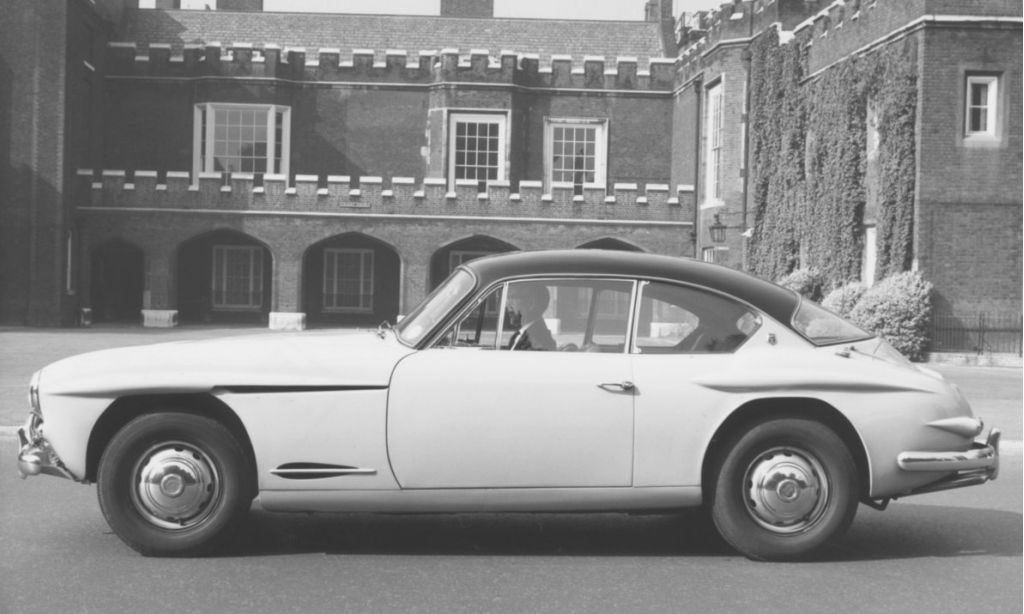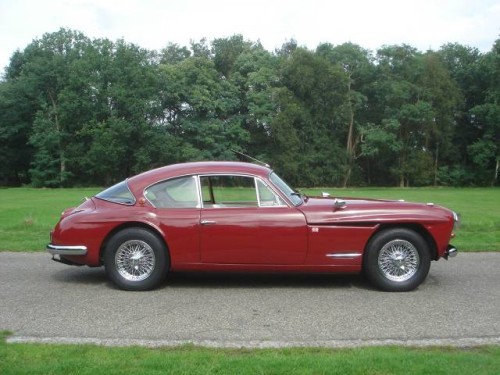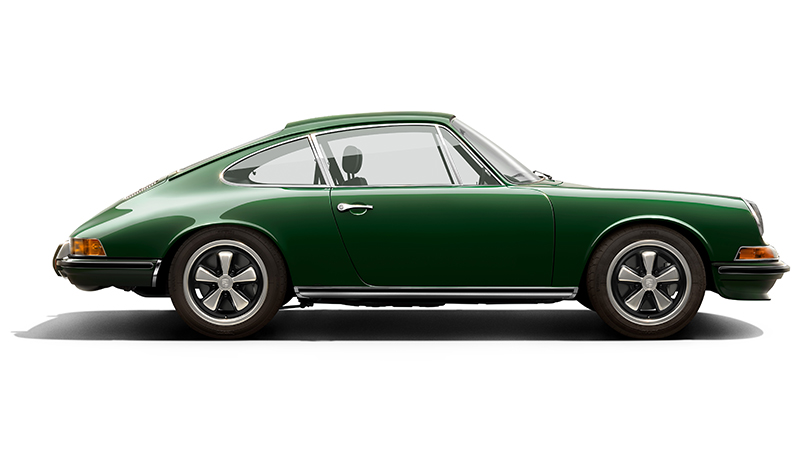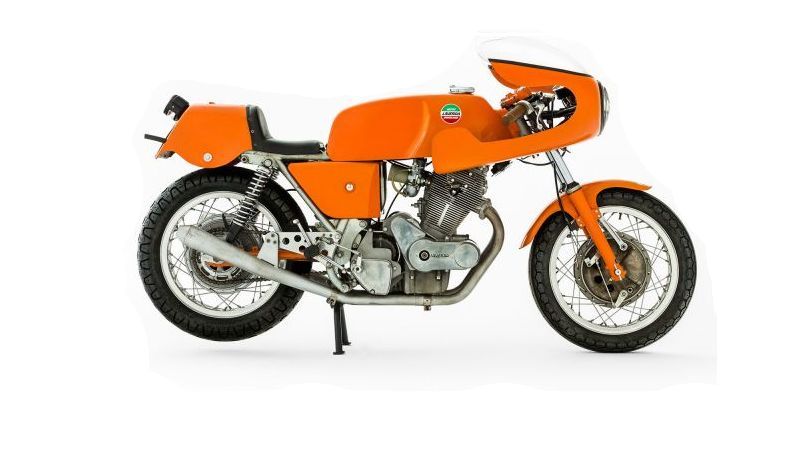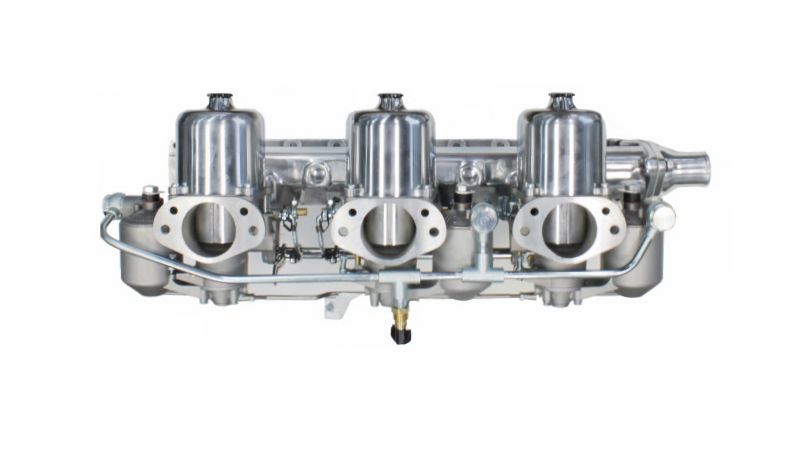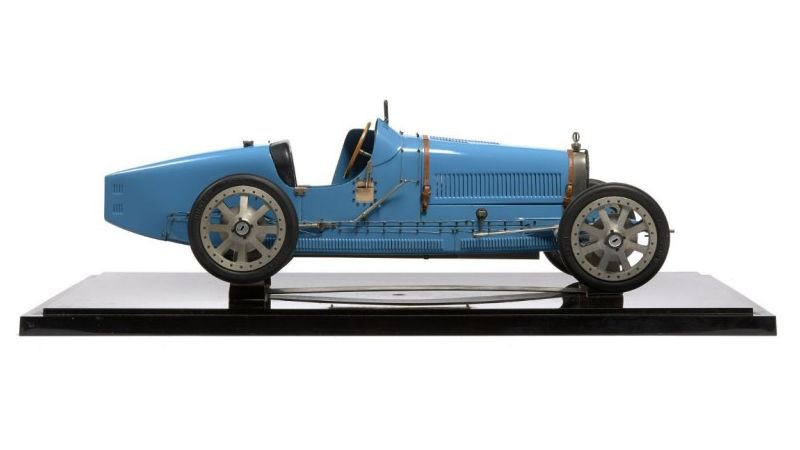Jensen Motor Cars
example Jensen successfully Sold
Jensen Motors Limited
Alan and Richard Jensen produced their first car in 1928 when they converted a five year old Austin 7 Chummy Saloon into a very stylish two seater with cycle mudguards, a louvred bonnet and boat-tail.
The vehicle was soon sold and replaced with another Austin 7. Then came a car produced on a Standard chassis, followed by a series of specials based on the Wolseley Hornet, this being a popular sporting small car of the time.
The early 1930s saw the brothers becoming joint managing directors of commercial coachbuilders, W. J. Smith & Sons, and within three years the name was changed to Jensen Motors Limited. Soon, bodywork conversions were being completed on readily available chassis from Morris, Singer, Standard and Wolseley.
Jensen’s work did not go unnoticed, as they received a commission from actor Clark Gable to produced a car on a US Ford V8 chassis. This stylish car led to an arrangement with Edsel Ford for the production of a range of sports cars using a Jensen designed chassis and powered by Ford V8 engines with three speed Ford transmissions.
Next came a series of sporting cars powered by the twin-ignition straight-eight Nash engine, or the Lincoln V12 unit. On the commercial vehicle side of the business, Jensen’s were the leaders in the field of design and construction of high-strength light alloys in commercial vehicle technology and produced a range of alloy bodied trucks and busses powered by either four-cylinder Ford engines, Ford V8s, or Perkins diesels.
World War Two saw sports car production put aside and attentions were turned to more appropriate activities, such as producing revolving tank gun turrets, explosives and converting the Sherman Tank for amphibious use for the D-Day invasion of Europe.
After the war, and in August 1946, Jensen launched their entirely new PW model, powered by a Meadows straight-eight cylinder 3,860cc engine, a car that was shown with some success at the London Motor Show that same year. However, the Meadows engine suffered from excessive vibration and Jensen had to fall back on a stock pile of pre-war Nash engines to stem complaints from customers.
Shortly after the launch, Richard Jensen saw what looked like another Jensen PW on the streets of London, but the car, however, turned out to be the new four-litre Austin Sheerline.
What had happened was that Leonard Lord of Austin, who would later become involved in the production of the Austin-Healey sports car range, had also been impressed with the Jensen PW, having seen it at the motor show, and produced a car that was similar in appearance.
Jensen was not amused, and so an urgent meeting was called between Leonard Lord and the somewhat aggrieved Richard Jensen to discuss the issue. In an effort to placate Jensen, Lord offered the use of the Austin four-litre six-cylinder engine.
As Jensen was being backed into a corner, this being on account of having a car with no suitable engine, accepted the offer, which marked the beginning of an arrangement that led to an association between the two companies that spanned twenty years.
Having now got the new engine for the PW, the Jensen brothers turned their attention to the production of another sports car, the Jensen Interceptor.
Designer, Eric Neale, wanted to use Leonard Lords Austin A70 chassis, a suggestion that Lord readily agreed to, but with the proviso that Jensen also produce a special sports body for Austin. The result was that the two vehicles they were produced looked very similar in style.
In preparation for the 1952 London Motor Show at Earl’s Court, it is alleged that Leonard Lord set up an unofficial competition between Jensen, the Donald Healey Motor Company and Fraser-Nash to each build a car, after which he would decide which one he would invent in.
The Jensen car was the stylish two-seater open-top sports model that had already been commissioned by Lord and built on the Austin A40 chassis. Unfortunately, the car wasn’t finished in time for the Motor Show and so it wasn’t available for Lord to see. Out of the remaining two, he chose to offer a contract to Donald Healey to build his car.
Later, however, the production of the Jensen car did go ahead, and which looked very similar to the Austin A40 Sport; a car that was also built for Austin by Jensen. Some 3,200 Austin versions were produced, with 643 being exported to the United States, and the revenue from the success of the car provided the Jensen motor company with a healthy income, allowing them to bid for other projects, such as the production of the body for the new Austin-Healey 100.
Not having the capacity to build his car alone in the numbers required, Donald Healey had to find someone to help him. It would have been logical sense for the Austin-Healey 100 to be manufactured at the Austin plant in Longbridge, but Austin, like Healey, did not have the capacity to produce the car from scratch and in the volume required.
Having previously established contact with Tickford, a company now owned by Ford, Donald Healey asked them to help. Tickford’s capacity to build the car turned out to be an estimated about 40 cars per week, but Healey needed more than that.
In the end a meeting was arranged between Leonard Lord and Richard Jensen, during which Jensen gave assurances that they could produce up to 150 cars per week. Lord was interested, and having examined the Jensen prototype of the Austin A40 based sports car as an example of their work.
Being impressed by the vehicle, he awarded The Jensen Motor Company the contract to build the bodies for the new Austin-Healey 100. All subsequent styling and body engineering of the Austin-Healey 100, including the production of competition vehicles, was undertaken by Jensen in partnership with Donald Healey and BMC.
Aided by the immense popularity of the Austin-Healey 100, and with the order books for Healey car bodies full, Jensen had sufficient financial resources to develop a new GT model of their own and as a successor to the Interceptor. This vehicle was the Jensen 541, and it went on sale in 1954.
The car, a very attractive coupe, had a chassis that was designed by Jensen, but still with the Austin drive train and suspension. Donald Healey was certainly impressed, as he placed an order for one, but without an engine!
When the car was delivered, Healey fitted a small block Chevrolet V8 engine, making a very fast and mechanically robust motorcar that he used as his personal transport on a daily basis. The Jensen 541 was the first British production saloon car to be fitted with disc brakes to all four wheels.
While Jensen continued to build the Austin-Healey 100, the company discontinued the use of Austin components for their own cars, as in 1962, the Jensen CV-8 was launched.
The Jensen CV-8 was powered by a Chrysler V8 engine that had been supplied direct by Chrysler, complete with their excellent Torqueflite automatic transmission. The same equipment was later fitted to the Italian styled Jensen Interceptor, introduced in 1966, a car that remained in production until 1975.
From the late 1950’s, the Jensen Motor Company became the property of the Norcross Group, but this was a tetchy relationship that led to the premature retirement of Alan and Richard Jensen, the original founders of the business.
In 1961 however, prior to their departure, the Jensen Motor Company won a contract to assemble, paint and finish the new Volvo P1800 coupé, the bodies for which being produced by Pressed Steel in Scotland. After completion the bodies were shipped to Sweden to be made into the competed car.
The arrangement didn’t work out as the Pressed Steel body shells did not turn out to be of the required high standard expected by Volvo, and the cars were arriving in Sweden often with substantial damage. Pressed Steel were producing 130 bodies per week until Volvo bought themselves out of the contract and finished the vehicles on their own.
From 1963 to 1967, Jensen helped to build the Sunbeam Tiger for the Rootes Group. This was a stylish two-seater using the body of the standard Sunbeam Alpine, but with a Ford V8 engine squeezed in under the bonnet.
7,067 of them were built until Rootes were taken over by Chrysler, at which point the car was discontinued on account of Chrysler’s refusal to allow the use of a Ford engine in what was now one of their cars.
Jensen's Austin-Healey contract was the main source of income for the company, and relied totally upon a good working relationship being maintained between Donald Healey and BMC, but in 1965 Donald Healey was having a battle with George Harriman of BMC over the distribution of finances earned from the manufacture of the Austin-Healey 100/6.
Harriman made it known that it was his intention to end the production of the car and replace it with an MG model, a car that turned out to be the MGC, and which he intended would be sold as the Austin-Healey 3000 Mk IV. This efectively marked the end of the relationship between Donald Healey and BMC, who were now British Leyland Corporation Limited.
As a result of the disarguement between Donald Healey and Harriman, the Jensen brothers decided to build a new model of their own to replace the Austin-Healey 3000. Two prototypes of the P66 were built, powered by a 4.5 litre Chrysler V8, giving a top speed of 140 mph. Jensen planned this new car for the US market and thought the appeal to the Americans would be great on account of it being British built, but with the familiarity of a home-grown engine.
However, the P66 caused monumental arguments between the Jensen Company and the Norcross Group. The Jensen Brothers had seen the car as the natural successor to the Austin-Healey 3000, but the Norcross Group wanted them to design a replacement for the Jensen C-V8.
Jensen argued that as they estimated the new P66 would be priced at £2,200 in the UK, against £3,500 for the C-V8, there was potential for it to be sold in large numbers. However, as the Norcross Group was the controlling force over Jensen, and so controlled the purse strings, the P66 project was abandoned for a different car – the new Jensen Interceptor.
Within weeks of this squabble, Eric Neale, Jensen’s chief designer, resigned, as did both Alan and Richard Jensen, although they referred to it as retirement.
During the late 1960s, and into the 1970s, The Jensen Motor Company produced the highly successful Jensen FF, the FF demarcation standing for Ferguson Formula, a four-wheel drive system. The car almost identical in appearance to the Interceptor.
The most obvious difference being the double side grills on the front wings, and was something of a revelation in saloon car design. Little did they know of how popular 4-wheel drive would later become in road car design.
The same car was also fitted with the Dunlop Maxaret breaking system, which prevented the wheels locking up under braking and achieved by the use of special mechanical sensors, making this the first ever car to be equipped with ABS.
In the closing years of the 1960s, the Jensen Motor Company was in a deep financial difficulties. The Austin-Healey 3000 had been discontinued, and with no other model to replace it, the contract with Donald Healey, together British Leyland Motor Corporation, had come to an end.
Compounded with these issues there were build quality problems surrounding the Interceptor, a factor that was putting off many potential buyers for the car. To get away from the heavy financial burden the Norcross Group sold the company to merchant bankers, William Brandt Sons & Company limited, and through careful management, the production of the Interceptor was increased to try and improve sales - and then decreased again later to allow for improvments in build quality.
However all of this was futile, as the Jensen Motor Company looked like it was going nowhere and seemed it was destined for collapse. However, having been severely battered by his experience with the newly formed British Leyland Motor Corporation, who had pulled out of the production of Austin-Healey sports cars, Donald Healey once again formed an association with Jensen and went on to build a new sports car with a San Fransisco businessman, Kjell Qvale.
Qvale operated a very successful company in the United States, selling Jaguar, Rolls-Royce and other British cars. He too was dismayed at the discontinuation of the Austin-Healey 3000 and learning of the role played by Jensen in the construction of the big Healey, he was interested in Donald Healey’s plans to build a new sports car.
Before long Qvale became a majority shareholder within the Jensen Motor Company and so took control, appointing Donald Healey as Chairman, an event that completely and finally severed all involvement between Donald Healey and British Leyland.
From the newly formed relationship there came a new car with a new brand name, the Jensen-Healey. This was a whole new vehicle that promised much, but turned out to be very disappointing. Right from the outset there were problems with the build quality and with engine reliability.
First the car had a Vauxhall engine, after which a BMW engine was considered, before an untested and under developed Lotus unit was used. This engine seemed a wise choice, as not only did it satisfy the new US exhaust emission regulations, but it was designed to be fitted at an angle of 45 degrees, which meant it was not very tall; providing the opportunity to use a low profile body.
However, Qvale was impatient and insisted upon the engines being delivered early, way before they had been fully tested and developed. The finished car made its debut at the Geneva Motor Show in March 1972 and to the initial approval of the motoring press.
However, it wasn’t long though before the faults within the car became apparent, something, which cost the Jensen Motor Company a considerable amount of money, money they could not afford to spend.
In August 1972 the Mk11 version was released. This was a vastly improved car and was shortly improved again in November 1974 with the fitting of the German Getrag five-speed gearbox.
However, Donald Healey had become totally disillusioned with the whole Jensen organisation and left the Jensen Board, refusing to allow his name to be associated with the fixed-head, hatch-back GT version of the Jensen Healey car, simply named the Jensen GT, that was introduced in July 1975.
With the connection between Jensen and Austin, as well as their relationship with Donald Healey and Austin becoming a distant memory, Jensen lurched from one crisis to the next, but it was the energy crisis of 1974 that carried Jensen to the brink of total collapse. A plea for help to the serving Labour Government at the time was rebuffed, and in May 1976, Jensen Motors Ltd ceased trading forever.
Following the demise of Jensen, Kjell Qvale purchased the company assets from the official receivers and went on to form another company that specialised in servicing and renovating Jensen cars, a project supplemented by the importation and distribution of Subaru and Hyundai cars.
Later attempts by various interested parties to resurect the name never got off the ground and it seems that the Jensen brand is just another of those great British names in car manufacture that will be confined to the history books.
We are looking for the following cars. If you do have any of the below listed vehicles - and you are ready to sell - please Contact Us.
| Jensen |
|---|
| 541 Deluxe, S & R |
| C-V8 |
| Interceptor |
| FF |
| Jensen-Healey |
We buy, sell, broker, locate, consign and appraise exceptional classic, sports and collector Jensens'
Contact us when you are serious about buying a fine Jensen Motor Car or to arrange a free and confidential valuation with a view to selling.
